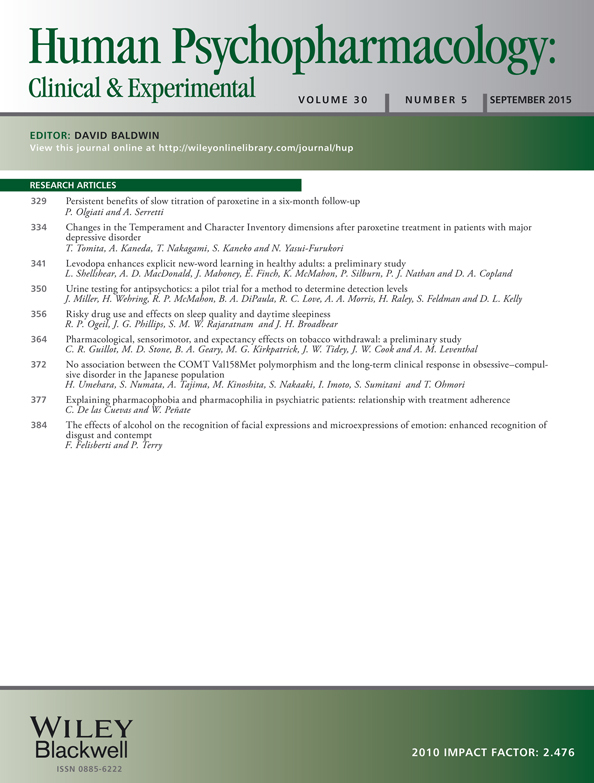Explaining pharmacophobia and pharmacophilia in psychiatric patients: relationship with treatment adherence
Abstract
Objective
The objective of this study is to assess psychiatric patient attitudes towards psychotropic medication and their association with adherence, as well as to identify the factors that influence these attitudes.
Methods
Nine hundred and forty nine consecutive psychiatric outpatients categorized as “pharmacophobic” or “pharmacophilic” according to the Drug Attitude Inventory were compared with regard to adherence to prescribed treatment, socio-demographic variables, clinical characteristics, health locus of control, self-efficacy, and psychological reactance.
Results
Seventy three per cent of psychiatric outpatients showed a “pharmacophilic” attitude and 15.5% “pharmacophobic” one. Patients' attitudes toward prescribed drug treatment were clearly related to self-reported treatment adherence. The pharmacophobic group registered significant worse adherence than the pharmacophilic patients. Psychiatric patients’ attitudes to drugs were mediated by external health locus of control, cognitive psychological reactance, and self-efficacy.
Conclusion
The encouragement of psychiatric patients’ treatment adherence needs to include lack of coercion during prescription, a positive relationship with the prescriber, verbal persuasion, information containing vicarious experience, and the involvement of the patient in treatment decisions. Copyright © 2015 John Wiley & Sons, Ltd.




